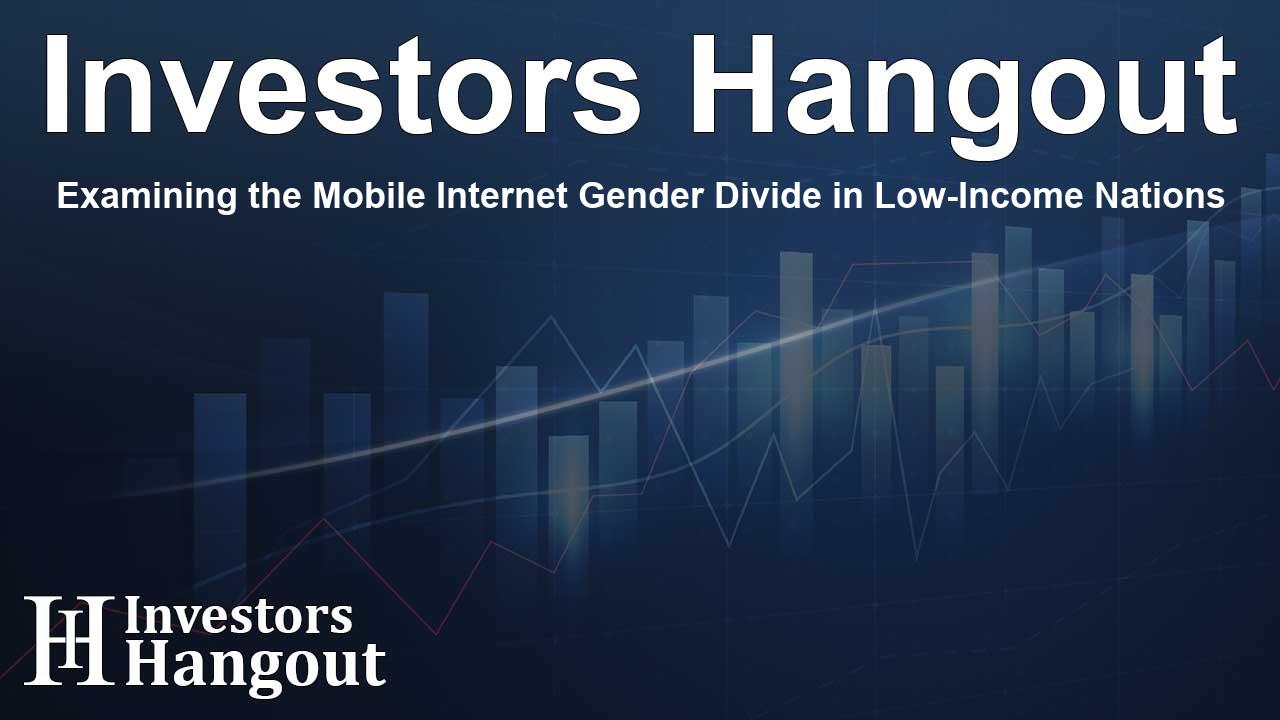Examining the Mobile Internet Gender Divide in Low-Income Nations

Addressing the Gender Disparity in Mobile Internet Usage
In recent years, the pressing issue of mobile internet access among women in low and middle-income countries (LMICs) has garnered significant attention. A report fueled by the latest insights reveals that women remain 14% less likely than their male counterparts to utilize mobile internet services. Shockingly, around 885 million women are still unconnected, indicating a profound digital divide.
Current State of Mobile Internet Access
This deepening divide is particularly concerning as it highlights that approximately 235 million fewer women than men have access to mobile internet. The hurdles faced by women in LMICs span beyond mere connectivity; they delve into the socioeconomic landscape that shapes their lives. The report underscores the undeniable truth that the majority of these women are situated in regions like South Asia and Sub-Saharan Africa, where the infrastructure for digital technology may be lacking.
Impact of Mobile Internet on Women's Lives
Research indicates that a significant number of women benefit positively from mobile internet, as it aids in enhancing communication, supporting livelihoods, and granting access to crucial services such as healthcare and banking. However, despite the potential benefits, the data reveals that while 63% of women in these countries are engaging with mobile internet, systemic barriers still lead to a pronounced gap between genders.
Historical Context of Progress
The trend of gender gap reduction exhibited some promise in the past; it decreased from 25% in 2017 to 15% by 2020. Yet, this momentum faced a halt in subsequent years, indicating stagnation between 2021 and 2022. By 2023, the gap slightly narrowed but has since remained relatively unchanged, showing an alarming persistence of inequality, especially in regions like South Asia where the gap reaches a staggering 32%.
Voices from the Field
Claire Sibthorpe, a leading voice in digital inclusion at the GSMA, addressed the disheartening stagnation of progress. She emphasized how pivotal it is for various stakeholders to engage collaboratively in tackling this entrenched digital gender gap. Sibthorpe expounded on their Connected Women Commitment Initiative, underscoring its success in supporting over 80 million women in accessing mobile internet or mobile financial services since its inception in 2016.
Challenges Faced by Women
Despite 61% ownership of smartphones among women in LMICs, there remains a staggering figure of 945 million women without access to these essential tools. The affordability of entry-level smartphones poses a significant barrier, costing women an average of 24% of their monthly income compared to men. Coupled with challenges such as affordability, safety concerns, and inconsistent connectivity, many women are using mobile internet less frequently and for limited services.
The Way Forward
Moving forward, it becomes crucial for all involved parties to prioritize clear strategies that cater to the unique needs of women in the digital space. This entails not only addressing the affordability of devices but also innovating safety protocols and expanding coverage in underserved regions. Engaging local communities to promote digital literacy among women could be a transformative step in bridging this gap.
Frequently Asked Questions
What is the current gender gap in mobile internet usage?
Women are currently 14% less likely than men to use mobile internet globally in LMICs.
How many women are without mobile internet access?
Approximately 885 million women in LMICs remain without mobile internet access.
Which regions have the highest gender disparity?
South Asia and Sub-Saharan Africa exhibit the most pronounced gender disparity in mobile internet access.
What initiatives are being taken to close the gap?
The GSMA's Connected Women Commitment Initiative has reached over 80 million women, addressing barriers to access.
What are the primary barriers to women's mobile internet access?
Key barriers include affordability, lack of devices, safety concerns, and poor connectivity.
About The Author
Contact Kelly Martin privately here. Or send an email with ATTN: Kelly Martin as the subject to contact@investorshangout.com.
About Investors Hangout
Investors Hangout is a leading online stock forum for financial discussion and learning, offering a wide range of free tools and resources. It draws in traders of all levels, who exchange market knowledge, investigate trading tactics, and keep an eye on industry developments in real time. Featuring financial articles, stock message boards, quotes, charts, company profiles, and live news updates. Through cooperative learning and a wealth of informational resources, it helps users from novices creating their first portfolios to experts honing their techniques. Join Investors Hangout today: https://investorshangout.com/
The content of this article is based on factual, publicly available information and does not represent legal, financial, or investment advice. Investors Hangout does not offer financial advice, and the author is not a licensed financial advisor. Consult a qualified advisor before making any financial or investment decisions based on this article. This article should not be considered advice to purchase, sell, or hold any securities or other investments. If any of the material provided here is inaccurate, please contact us for corrections.
